30 amazing weight loss secrets you must steal asap
Learn science-backed ways to drop extra pounds—and keep them off in the long run.
Updated on September 13, 2024

What are the best, most effective tips for losing weight? Here are science-backed strategies to help you drop extra pounds, keep them off in the long term, and improve your overall health.

Practice portion control
Weight loss is a function of calories in, calories out. That means if you eat fewer calories than you burn, you often lose weight. It’s a simple idea, but not an easy process.
It often helps to eat fewer calories in the first place. To do this, try practicing portion control. That mean managing the amount of food you eat, and sticking to recommended serving sizes.
The proper serving size of your favorite foods may surprise you, so it’s important to measure out your food, at least at first. Invest in a kitchen scale—or break out the measuring cups and spoons—to ensure you’re not overeating without even realizing it.
What does a healthy serving size look like?
- 3 ounces of lean meat, like chicken or salmon (or the size of a deck of playing cards)
- 1.5 ounces of cheese (or the size of four dice)
- 0.5 cup of ice cream or frozen yogurt (or the size of half a tennis ball)
At home, try this: When you’re making a meal, make sure fruits and veggies take up about half your plate, Whole grains like brown rice should take up another quarter, and then a lean protein source should comprise the final quarter. These include foods like chicken, fish, beans, and tofu.
Take extra care of when you’re eating out, since restaurants often serve far more than one portion of food. Try this the next time: Ask the server to bring half of your meal already in a doggie bag. That way, you slash calorie consumption and have a delicious meal ready for the next day.
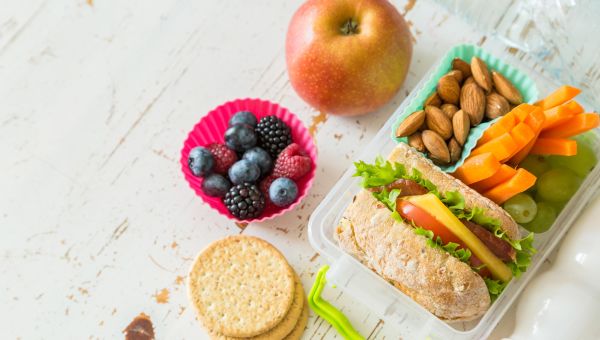
Make calories count
So, you’ve reduced the number of calories you’re taking in. Now, make the calories you consume count. Whenever possible, choose nutrient-dense whole foods over processed products full of empty calories. Try to emphasize foods that come from plants. For example:
- Instead of white bread, white rice, and regular pasta, choose whole-grain foods. These include oatmeal, brown rice, and items made with barley, quinoa, and other grains.
- Choose condiments wisely, since many contain added salt, sugar, and saturated fats. For example, on salads, limit croutons, candied nuts, and calorie-dense dressings. Choose vegetables, roasted nuts, beans, and fresh fruit instead. On sandwiches, add lettuce, tomato, hummus, avocado and low-calorie condiments like Dijon mustard instead of mayo and bacon.
- Snack on things like fruit, veggies, hummus, popcorn, and nuts. Limit chips, cookies, and crackers.
Wondering whether a food is good for you? Stick to the mantra of In Defense of Food author Michael Pollan: "Eat food. Not too much. Mostly plants."
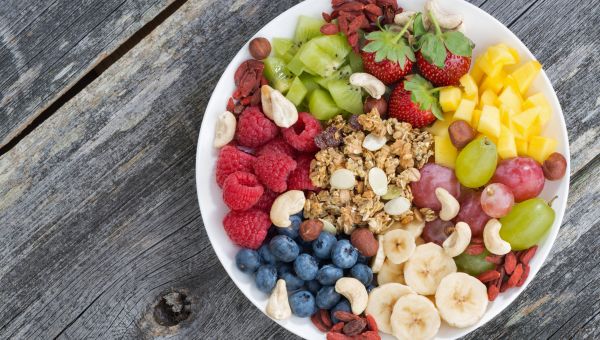
Snack on protein and high-fiber foods
Fiber has many benefits. It can help protect against heart disease and keep your gut healthy. It also helps you feel fuller for longer, so you’ll want to eat less overall.
The thing is, you probably need more fiber in your diet. Adults in the United States eat an average of 16 grams per day, when they should be eating between 22 and 34 grams, depending on age and sex.
Packable, snackable choices high in fiber include raw carrots and peppers, unsalted nuts, and fruit like apples, pears, and bananas.
High-protein foods are also wise choices for feeling satisfied. Try snacking on:
- Hard-boiled eggs
- Nuts and nut butters
- Edamame
- Low-fat Greek yogurt
- Tuna packed in water

Be more mindful when you eat
It’s easy to turn to food for comfort if you’re feeling upset, stressed, or bored. While it may feel like you have little control in these situations, this response is a habit that can be broken.
One strategy is to be mindful, or conscious of whether you’re truly hungry or feeling a different emotion. Studies have suggested mindfulness can help people make healthier eating choices. In these cases, a distraction may also help. Try going out for a walk or calling a friend.
Another strategy is remembering why you’re trying to lose weight. What is your purpose or ultimate goal? Maybe you’re improving your health, or increasing your energy to be more present for your family.
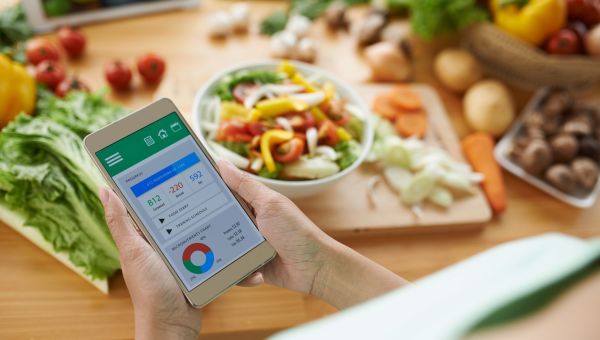
Track your progress
Multiple studies have found that logging meals is strongly linked to weight loss—and those who keep more comprehensive diaries tend to drop more weight. That's because:
- It reveals how many calories you truly consume each day.
- It helps you understand correct serving sizes and portion control.
- It keeps you accountable, even if it's to a computer.
You may also want to track your weight. Weighing yourself each day could be more frustrating than helpful, since weight does naturally fluctuate throughout the day. So, try weighing yourself once a week at the same time of day. Remember that losing one or two pound a week is considered healthy for lasting weight loss.
To log your food intake or your weight, try a pen and paper or an app.
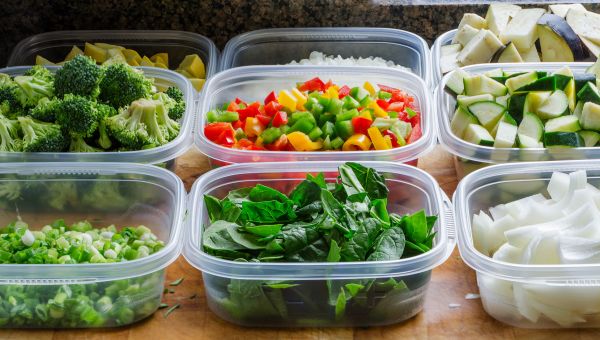
Meal prep like a pro
You may be surprised at how much easier your week could flow if you take time to prep your food for the days ahead.
Meal prepping doesn’t have to be full meals portioned out into containers. You can wash, dry, and cut up fresh vegetables and fruits. Then, store them in plastic bags so they’re readily available for salads, stir-fry’s, snacking, smoothies, or wraps during the week.
Prep protein and whole grain options the same way. Brown rice, quinoa, legumes, and tofu can all be made ahead and stored separately. Instead of piling all of the ingredients together and eating the same combos over and over again, mix and match these ready-to-go ingredients on the fly.
To add flavor, check your cabinet for spices like cinnamon, paprika, and ginger and dried herbs such as parsley, thyme, and basil. Flavored oils and vinegars, citrus fruits and zests, and low-calorie condiments like salsa, hot sauce, low-sodium soy sauce, or Dijon mustard can often complete a meal. Don’t be afraid to experiment.

Savor (some treats
Depriving yourself of the occasional treat could derail your eating plan. On the flip side, healthy snacking can give you energy and keep you full. Snack smart by keeping grab-and-go items like nuts, air-popped popcorn, low-fat cheese sticks, fresh fruits, or cut-up vegetables on hand.
If you have a little more time, try these ideas, too:
- Roast chickpeas with olive oil and garlic salt.
- Make frozen yogurt popsicles by blending plain low- or non-fat Greek yogurt with your favorite berries, pouring it into a mold, and freezing.
- Whip up one-ingredient banana ice cream. Simply cut up a banana, place slices in a plastic bag and freeze. Next, toss the frozen banana slices in the blender and blend until it reaches an ice cream-like consistency. Serve and enjoy!

Use these 3 water tricks
Drinking enough water is great for your overall health. And, if you typically have soda or juice, drinking water instead can save many hundreds of calories each day. Try these tips to increase your water intake:
- Jazz up plain water. Use a fruit infusion pitcher to give regular water a boost of flavor. Fruits like lemons, raspberries or limes are great options.
- Drink a glass of water before each meal. Some people may notice they eat less.
- Carry a water bottle with you. Keep it filled and leave it where you can see it.

Rethink how you drink
In terms of health, the wisest amount of alcohol is none at all. But if you do drink, make sure you do so in moderation. It will save calories and help protect your overall well-being. Moderation means a limit of one drink each day for women, and two for men.
Consider what you drink, too. When you’re trying to lose weight, the beverages you choose can have a significant impact. Consider this: A 12-ounce pina colada has 656 calories, according to the USDA. A 12-ounce bottle of Guinness? Just 125 calories.
Follow these tips for lighter imbibing:
- Beer: Choose light beers or regular beers with a lower alcohol by volume (ABV). Less alcohol content generally means fewer calories.
- Wine: Skip dessert wines like port, but keep in mind the sweetness of a wine doesn't necessarily determine its calorie count. Riesling often has fewer calories than Cabernet Sauvignon, for instance. Again, look for the lower ABV.
- Liquor: Liquor is usually calorie-dense due to its high alcohol volume, so stick to one drink on the rocks or dilute it with a low-calorie mixer. Cutting flavored vodka with seltzer, for example, reduces calories and allows for ample nursing.
Mixed drinks and pitchers can be tricky, since contents are often a mystery. In general, skip high-calorie mixers like coconut milk or sour mix. Instead, opt for lighter juices, tonics, and seltzers. Adding cut-up fruit never hurts, either.
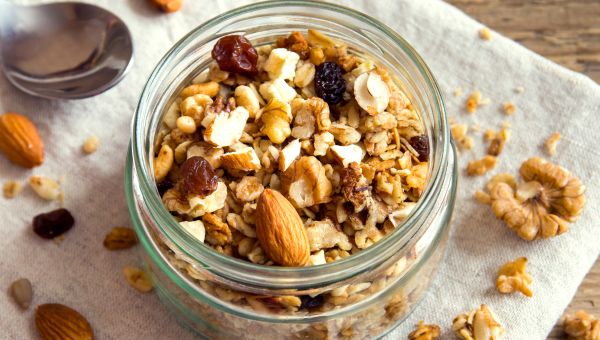
Beware the “health halo”
Natural,” “low-fat,” “organic”—if these phrases are on the food label, then it’s healthy, right? Well, it could just be part of the “health halo” effect. The “health halo” refers to food items that many consumers perceive as “healthy” because of marketing claims. But really, they could contain extra salt, sugar, or saturated fat.
When you’re shopping, remember that buzz words don’t ensure that what you’re eating is necessarily a wise diet choice. Some common items often associated with a “health halo” include:
- Smoothie or acai bowls
- Granola
- Flavored yogurt
- Baked chips
- 100-calorie snack packs
- Some protein bars
Remember to read nutrition labels, stick to the recommended serving sizes, and buying whole foods with limited ingredients.
Once you start checking labels, you’ll quickly realize that added sugar, in particular, often hides in unexpected places. Beware of beverages like soda, especially; even “low sugar” or “no sugar added” juices may contain over 20 grams of sugar per serving. Bottled tea, coffee, and sport drinks are also significant sources of sugar. Opt for sparkling water or unsweetened iced tea instead.

Brown bag it
Consider this: In 2019, a study in the American Journal of Preventive Medicine found the average fast food and fast casual restaurant combination meal contained around 1,200 calories. That's more than half the calories many people need in a single day.
So, if you're trying to drop pounds, bring your office lunch from home. You’ll have control over your what you eat, and odds are you'll save quite a bit of money, too.
Try these tips for easy brown bagging:
- Take an hour on Sunday to make lunches for the week. Soups, salads, grain bowls, bean-and-veggie burritos and sandwiches with whole-grain bread will typically keep for a few days. If you opt for salads, make sure salty items and dressings are separate; they'll wilt greens.
- Purchase small, portable foods for easy snacking and lunch assembly: whole fruit, cheese sticks, bags of nuts, hummus cups, etc.
- Double your dinner and immediately put away half for the next day.
You may want to look into a Bento box or reusable lunch box, as well, since partitions and compartments can help you control portions.
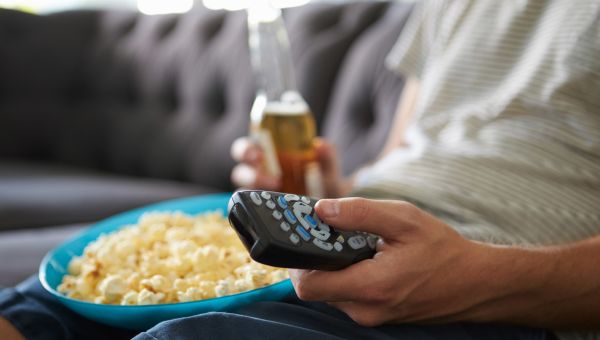
Turn off the TV
Distracted eating—having meals and snacks without paying attention to what you consume—is proven to lead to weight gain. And for adults in the U.S., that diversion often comes from the television set. To curb your addiction, try these tips:
- Ditch the distractions. Keep TVs out of the kitchen and dining room, and put your phone away during dinner.
- Eat meals with someone else. Set the table nicely to feel like more of an experience.
- When the weather is nice, eat outside. It feels like a treat, and there are no screens to distract you.

Branch out from your normal grocery store haul
It’s easy to load the same things in your grocery cart week after week. But doing so may limit your eating plan possibilities. So, consider branching out. Make it point to purchase new-to-you foods to try. Try to emphasize whole, plant-based foods over processed items and red meat. They often have fewer calories and less added salt, sugar, and saturated fat.
Start with these ideas:
- Consider unsweetened soy or oat milk over regular whole milk.
- Trade mayonnaise for mashed avocado or Greek yogurt.
- Try veggie burgers or Portobello mushrooms instead of hamburger patties.

Centers for Disease Control and Prevention. Healthy Weight and Growth: Tips for Maintaining Healthy Weight. December 28, 2023.
University of Rochester Medical Center. Visualize Your Portion Size. December 1, 2009.
USDA. MyPlate. Accessed September 13, 2024.
American Heart Association. What Is a Serving? Reviewed March 26, 2024.
Greger M. A Whole Food Plant-Based Diet Is Effective for Weight Loss: The Evidence. Am J Lifestyle Med. 2020 Apr 3;14(5):500-510.
American Heart Association. Get to Know Grains: Why You Need Them, and What to Look For. Reviewed June 25, 2024.
MedlinePlus. Fiber. Reviewed July 25, 2022.
USDA. Dietary Guidelines for Americans 2020-2025. December 2020.
MedlinePlus. High-fiber foods. Reviewed July 30, 2022.
Veldhorst M, Smeets A, Soenen S, Hochstenbach-Waelen A, et al. Protein-induced satiety: effects and mechanisms of different proteins. Physiol Behav. 2008 May 23;94(2):300-7.
Loucks EB, Kronish IM, Saadeh FB, et al. Adapted Mindfulness Training for Interoception and Adherence to the DASH Diet: A Phase 2 Randomized Clinical Trial. JAMA Netw Open. 2023;6(11):e2339243.
Harvard Health Publishing. Losing weight: Mindfulness may help. June 27, 2018
Mayo Clinic. Weight loss: Gain control of emotional eating. December 2, 2022.
The Yale Ledger. How to Stay Motivated While Losing Weight. May 31, 2023.
Warren JM, Smith N, Ashwell M. A structured literature review on the role of mindfulness, mindful eating and intuitive eating in changing eating behaviours: effectiveness and associated potential mechanisms. Nutr Res Rev. 2017 Dec;30(2):272-283.
Patel ML, Brooks TL, Bennett GG. Consistent self-monitoring in a commercial app-based intervention for weight loss: results from a randomized trial. J Behav Med. 2020 Jun;43(3):391-401.
Ingels JS, Misra R, Stewart J, Lucke-Wold B, Shawley-Brzoska S. The Effect of Adherence to Dietary Tracking on Weight Loss: Using HLM to Model Weight Loss over Time. J Diabetes Res. 2017;2017:6951495.
Burke LE, Wang J, Sevick MA. Self-monitoring in weight loss: a systematic review of the literature. J Am Diet Assoc. 2011 Jan;111(1):92-102.
Harvard Health Publishing. 5 habits that foster weight loss. February 14, 2017.
Cleveland Clinic. A Beginner’s Guide to Healthy Meal Prep. January 15, 2024.
Ducrot P, Méjean C, Aroumougame V, Ibanez G, et al. Meal planning is associated with food variety, diet quality and body weight status in a large sample of French adults. Int J Behav Nutr Phys Act. 2017 Feb 2;14(1):12.
Njike VY, Smith TM, Shuval O, Shuval K, et al. Snack Food, Satiety, and Weight. Adv Nutr. 2016 Sep 15;7(5):866-78.
Stookey JJ. Negative, Null and Beneficial Effects of Drinking Water on Energy Intake, Energy Expenditure, Fat Oxidation and Weight Change in Randomized Trials: A Qualitative Review. Nutrients. 2016 Jan 2;8(1):19.
Tate DF, Turner-McGrievy G, Lyons E, Stevens J, et al. Replacing caloric beverages with water or diet beverages for weight loss in adults: main results of the Choose Healthy Options Consciously Everyday (CHOICE) randomized clinical trial. Am J Clin Nutr. 2012 Mar;95(3):555-63.
Paz-Graniel I, Becerra-Tomás N, Babio N, Serra-Majem L, et al. Baseline drinking water consumption and changes in body weight and waist circumference at 2-years of follow-up in a senior Mediterranean population. Clin Nutr. 2021 Jun;40(6):3982-3991.
Çıtar Dazıroğlu ME, Acar Tek N. Water Consumption: Effect on Energy Expenditure and Body Weight Management. Curr Obes Rep. 2023 Jun;12(2):99-107.
Apolzan JW, Beyl RA, Martin CK, Greenway FL, White U. The Effects of Alcohol Consumption on Cardiometabolic Health Outcomes Following Weight Loss in Premenopausal Women with Obesity: A Pilot Randomized Controlled Trial. Int J Environ Res Public Health. 2020 Jul 23;17(15):5302.
Vercammen KA, Frelier JM, Moran AJ, Dunn CG, et al. Calorie and Nutrient Profile of Combination Meals at U.S. Fast Food and Fast Casual Restaurants. Am J Prev Med. 2019 Sep;57(3):e77-e85.
American Heart Association. Cooking for Weight Loss. January 25, 2024.
Weight Watchers. How cooking at home can help you lose weight. Updated July 10, 2024.
van Meer F, de Vos F, Hermans RCJ, Peeters PA, van Dillen LF. Daily distracted consumption patterns and their relationship with BMI. Appetite. 2022 Sep 1;176:106136
More On


video

article

slideshow


video


video
